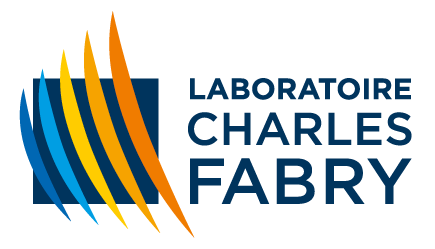Thesis defense of Lucas RANC
- Soutenance de Thèse
- Evénement scientifique
Thesis defense of Lucas RANC, PhD student in the Lasers group, on 18 October 2022 at 2pm in the Amphitheater of the Institut d'Optique Graduate School in Palaiseau and by video-conference, on the topic: "Study and improvement of the spatio-temporal intensity and contrast in petawatt (PW) laser chains".
Abstract: "The research studies conducted during the PhD thesis is part of a collaboration involving around ten laboratories specializing in intense lasers. Laboratoire pour l'Utilisation des Lasers Intenses (LULI) and Laboratoire Charles Fabry (LCF) are heavily involved in the developpement of the Apollon laser chain which will deliver ultra-short pulses with a peak power of 10 petawatts (PW). Focusing such laser pulses makes it possible to obtain ultra-intense illumination on the target. And this radiation can, for example, be used to generate relativistic particle beams. It requires many scientific advances in laser research coordinated with the users. One of the most important and promising scientific questions of the moment in terms of impact for this class of ultra-intense lasers is the characterization of spatio-temporal couplings. These couplings can cause a drop in intensity or temporal contrast.
This thesis was carried out as part of a CIFRE’s fellowship with Thales’ company, which is one of the world leaders in the PW laser market. This thesis includes a substancial experimental material related to the design and analysis of the most powerful lasers in the world, the Apollon laser and the PW lasers developed by Thales. In addition, this thesis also includes more analytical details, where research challenges in the physics of ultrashort pulses and the physics of non-linear effects come into play.
This thesis is therefore part of the research field of this new generation of multi-petawatt lasers. A first part of the thesis presents the results of a comissionning campaign of the spatio-temporal effects of the 1PW beam of the Apollon laser. Their quantification, precise measurements and correction have represented a real challenge. The experimental studies presented here is based on the development and implementation of new diagnostics adapted to ultra-intense beams and adapted to lasers at low repetition rate (1 shot per minute). It allows the evaluation of the quality of the pulses delivered. This led to the experimental identification of different spatiotemporal contributions.
A second part of the thesis presents the study and the improvement of the temporal contrast of the Apollon laser pulses. The experimental study allowed to isolate a critical optic located in the PW class stretcher systems. This optic is imperfect and due to the effects of light scattering on this optic its impact results in the degradation of the contrast at the level 10-100 ps before the pulse. A theoretical study has been conducted by taking into account the roughness of this optic. The study has shown the importance of a stochastic spatiotemporal effect which causes a drop in the temporal contrast ratio.
Improvements on the Apollon and Thales laser chains were made following this work and significant improvements were obtained. These changes have had a significant impact on the design of the new PW chains, particularly with regard to the criticality of the choice of certain large optics which has not been sufficiently taken into account until now."
